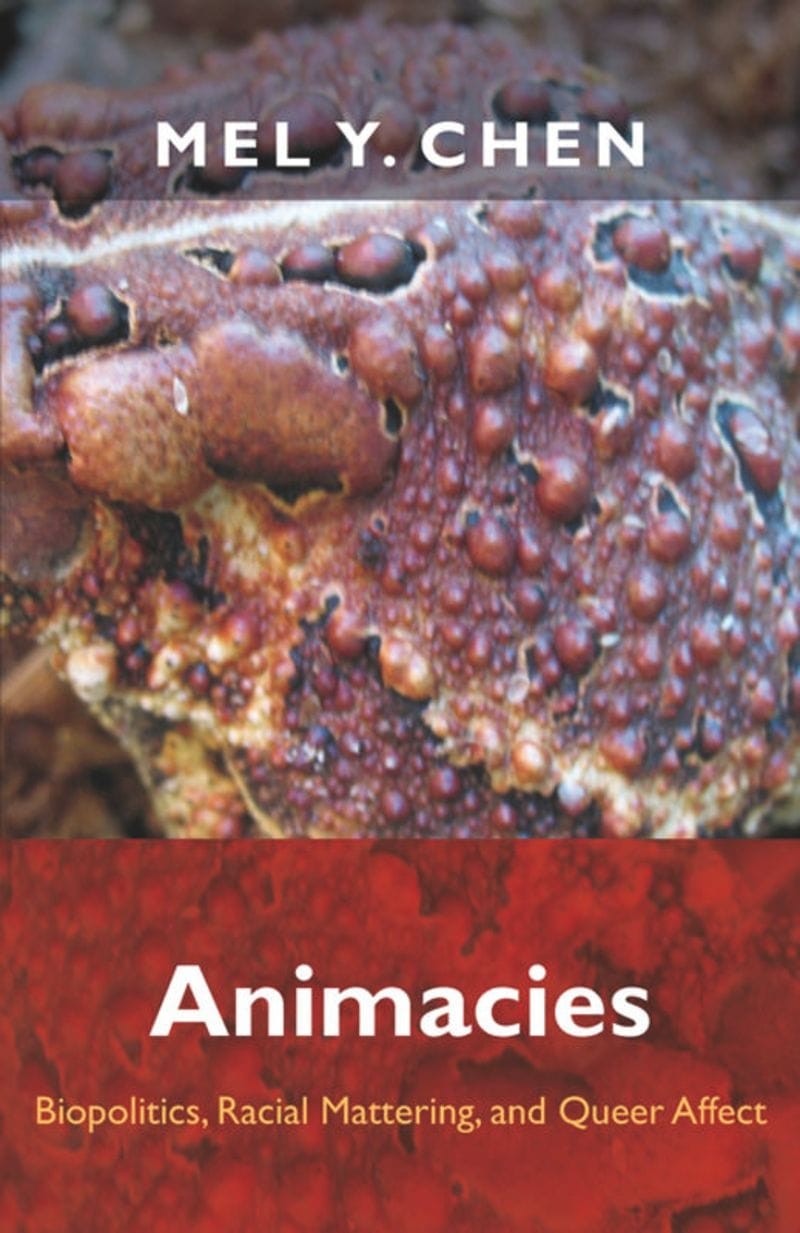Activism
Confession and Conspiracism in the Church of Social Justice
A true and sincere confession of one’s actual sins and cruelties is a courageous act that leaves one vulnerable and exposed.

“Indigenous peoples have been stewards of this planet since time immemorial,” tweeted Canadian Environment Minister Steven Guilbeault from the Glasgow Climate Change Conference earlier this month. “The fight against climate change is not possible without their knowledge and leadership.”
It was an odd thing to post. In recent years, many Canadian Indigenous groups have become full commercial partners in oil and gas development projects, and so have no particular incentive to apply their “knowledge and leadership” toward assisting white environmentalists such as Guilbeault in limiting carbon emissions. But even if First Nations, Inuit, and Métis peoples fully answered his call, it’s not clear why they would have any special insights to offer in regard to how densely urbanized nations such as Canada can best shift their industrial base, power generation, and transportation networks to low-carbon fuel sources.
But for Canadian progressives, Guilbeault’s intended audience, his message would have made sense, as it channelled the officially endorsed conceit that Indigenous peoples comprise a sort of oracular caste, whose folk wisdom shall inform the project of planetary salvation (or as one magazine headline writer rapturously put it, “we need Indigenous wisdom to survive the apocalypse”). Canadian progressives, a constituency once defined by fastidious secularism, are now experiencing a sort of Indigenous mystical awakening—a northern variant of the phenomenon described aptly by John McWhorter in his new book, Woke Racism: How a New Religion Has Betrayed Black America.
There are some important theological differences between the Canadian and US social-justice sects. But both are alike in the way they channel “whiteness” (often applied interchangeably with “colonialism”) as a form of original sin that passes ineradicably from one generation to the next. Any regular reader of Quillette will already be familiar with this theme. But I will include here one particularly vivid example, gleaned from the introduction to ‘They’re Protecting Whiteness and Their Fragility Is Showing’: How Feminist Praxis Disrupts White Supremacy in Neoliberal Predominately White Institutions, a publicly posted postgraduate thesis submitted in 2020 to the Women’s and Gender Studies department of the University of Wisconsin-Milwaukee:
My whiteness offers a level of inherent violence to this study because of the history of privilege and structural and overt acts of harm my ancestors have contributed to society. This echoes my experience in identifying as an anti-racist racist, who, as a white persxn [sic], is inherently racist, but applies and is accountable to anti-racism in my life through activist, educator, and research capacities … It is irresponsible for me to begin this study without acknowledging the privileges I am afforded in conducting this study, as a white individual, but also the contribution I make to violence … Additionally, I am aware of the inherent racism I pose as a white persxn contributing to anti-racist scholarship … I am accountable to my whiteness and to BIPOC individuals who have invested emotional labor in educating me. By being accountable to BIPOC emotional labor, I intend to prioritize space in this research to elevate BIPOC voices, narratives, and experiences. By naming my whiteness and the implications of doing this research, my aim is to challenge the structure of white supremacy in the university and provide an understanding of how white educators can be more informed of the violence they cause in the university. White educators and university administrators should be accountable for their whiteness to further inform their approach to education as anti-racist racists. Anti-racist racists will be identified as white individuals who approach racial difference with an anti-racist lens, but because of white supremacy are inherently racist.
Such ritualized denunciations of “whiteness,” now common in many academic sub-cultures, are so scathing in tone that they arguably channel the spirit of conspiracy theory as much as religion—with the white race depicted as biologically programmed for evil after the fashion of the imaginary Jewish villains who populate Protocols of the Elders of Zion. Yet when I googled the author who’d written this self-lacerating text, I was taken to the CV of a well-educated professional who’d spent much of her life teaching English in foreign countries and now was employed at a major university. I asked myself: Does this woman truly believe these claims? Or had she included them in her thesis merely as a matter of political convenience? Or was she co-opting the ennobling language of social justice to channel ordinary forms of anxiety and self-doubt (such as “imposter syndrome”)? Or was it some combination of all of these? It’s hard to know, because in this kind of progressive academic subculture—as in any system of enforced orthodoxy—the risks associated with candor are severe, and the main function of this kind of text is typically to disguise one’s thoughts rather than share them.
In Canada, this performative and artificial style of communication has become institutionalized in academic and corporate settings through the spread of land acknowledgments and pronoun checks—two gestures that originally were presented as a means to signal consideration for others, but which now are being conjoined into increasingly elaborate social-justice mission statements that are read aloud at meetings or appended to digital media. The leader of a student group at a large Ontario medical school, for instance, informs his email recipients that “as a white, cis-gendered, able-bodied settler residing within Township Treaty 6, part of the traditional lands of the Anishinaabek, Haudenosaunee, Lunaapeewak and Attawandaron peoples, my advocacy and privilege must be used to empower disempowered groups in order to realize a more equitable and just society. I commit to this mission and the continuous education, allyship, and unlearning that it will require.” Tommy Mayberry, Executive Director at the University of Alberta Centre for Teaching and Learning, goes further, identifying himself as “a visitor on Treaty 6 territory in ᐊᒥᐢᑿᒌᐚᐢᑲᐦᐃᑲᐣ amiskwacîwâskahikan and the homeland of the Métis Nation,” and confessing to the infliction of “colonial violence” against Indigenous peoples.
One might think that a university administrator confessing to acts of violence against innocent victims might also be inclined to surrender the fruits of his crimes. For surely, there are many qualified and motivated Indigenous Canadian educators who would be quite happy to take on Mayberry’s lucrative post as Executive Director at one of Canada’s biggest universities. Yet this sort of logical next step never seems to play out among the social-justice priesthood, notwithstanding the increasingly dramatic mea culpas emitting from their executive suites. It’s hard not to be reminded of Augustine of Hippo’s youthful prayer, “Lord, make me chaste—but not yet.”
In an appendix to Nineteen Eighty-Four, detailing the Principles of Newspeak, George Orwell wrote that Newspeak’s purpose was “not only to provide a medium of expression for the world-view and mental habits proper to the devotees of [English Socialism],” but also “to make all other modes of thought impossible.” The social-justice movement has accomplished something similar in recent years, by recasting disagreement and critique as forbidden forms of personal violence or emotional abuse. (In recent days, for instance, an Ontario teacher’s union denounced its own members for using the term “reverse racism” at a meeting, a phrase that the union president suggests to be an inherently “harmful” form of “harassment.”) Having thereby insulated themselves from internal critique, absolutists within the social-justice movement have had free rein to promote new dogmas that even most fellow progressives don’t actually believe: Indigenous people are Yoda; biological sex is a colonialist myth; society will be safer without police, and richer without capitalism. It was inevitable that these precepts would eventually take on a religious character because, being too far-fetched to withstand intellectual scrutiny, they are sustainable only as unfalsifiable mantras to be piously endorsed in public, even as they are mocked in private (a form of intellectual double life that will be familiar to anyone who has lived under theocracy, fascism, or communism).

About a decade ago, I wrote a book about conspiracy theories, which required me to interview hundreds of people who believe things that I know to be wrong. Colleagues and friends supposed that this would be a challenging experience. But as it turned out, I found most of these discussions to be enjoyable—not because I was receptive to what my interviewees were telling me about 9/11 or Barack Obama’s birth certificate, but because I was put at ease by their complete sincerity. Since they were reciting views that are highly stigmatized by society at large, none among these conspiracy theorists had any motive to speak with me except to communicate their genuine beliefs. The experience taught me that I can learn a lot more about the human condition from a delusion spoken sincerely than from propaganda mumbled by rote.
What made these interviews particularly illuminating is the confessional style that conspiracy theorists typically adopt when explaining the way they’ve come to their beliefs—often involving stories of personal cataclysm marked by lost fortunes or medical crises. Having lost faith in the “official narrative” promoted by media and government, my interviewees would step me through the conversations, books, websites, and YouTube videos that had informed their new vision of the world’s true workings. Many of these narratives were confusing or unsettling, and some weren’t even comprehensible. All were demonstrably false. But at the very least, I trusted that my interviewees were channeling a set of authentic human beliefs. That may seem like a low bar, but it’s one that a growing number of the smartest and most acclaimed intellects of our age never clear.
In his 1944 essay on Salvador Dalí, Orwell led off with the observation that “autobiography is only to be trusted when it reveals something disgraceful. A man who gives a good account of himself is probably lying, since any life when viewed from the inside is simply a series of defeats.” And you can tell a lot about a religious or intellectual movement by the degree to which it encourages, or suppresses, a truthful account of one’s past. At first blush, the endless admissions of “unearned privilege,” “whiteness,” “colonial violence,” and “racist anti-racism” contained in social-justice liturgy truly do seem to mimic the rites of Catholic confession. But over time, you notice that a pattern emerges: These admissions are always worded in extremely vague ways, and are constructed by use of the same set of pre-approved terms, never revealing a single genuinely shocking or shameful (let alone “disgraceful”) detail about the person’s actual life.
A true and sincere confession of one’s actual sins and cruelties is a courageous act that leaves one vulnerable and exposed. The ritualized anti-confession of social-justice liturgy, by contrast, is performed with the opposite purpose: It insulates the person by dispersing responsibility for his or her (invariably unspecified) sins among the hundreds of millions of other Earthlings who happen to share the same skin color. “I rear-ended your car” is a true confession. “I have failed to use my white privilege to address our structurally racist highway system” is not.
Ordinary people aren’t stupid—even those of us who have never been properly instructed in the correct manner to exorcise our white, cis-gendered, able-bodied settler privilege. And so we recognize these self-aggrandizing grifts of language for what they are. We also instinctively recoil at the dehumanizing, sterile and joyless nature of this idiom. To read something like “By naming my whiteness and the implications of doing this research, my aim is to challenge the structure of white supremacy in the university and provide an understanding of how white educators can be more informed of the violence they cause in the university” is to imagine the writer being a sort of wind-up talking box, like the windbag party hack in Nineteen Eighty-Four holding forth in the Ministry of Truth cafeteria, who strikes Winston Smith as “not a real human being but some kind of dummy. It was not the man’s brain that was speaking, it was his larynx. The stuff that was coming out of him consisted of words, but it was not speech in the true sense: it was a noise uttered in unconsciousness, like the quacking of a duck.”
Yet it sometimes does come to pass that this kind of duck will suddenly stop quacking, and start speaking of real human thoughts and emotions. And when this happens, the effect can be illuminating.
On November 15th, the University of British Columbia Okanagan Campus virtually hosted Berkeley Gender and Women’s Studies professor Mel Y. Chen, who spoke on the subject of “anti-racist feminisms” as part of a lecture series financed by UBC’s $100,000 “Anti-Racism Initiatives Fund.” The first part of Chen’s presentation delivered exactly what you’d expect from a Judith Butler protégé whose listed research areas include “Queer and feminist theory,” “Disability theory,” and “Cultural politics of race, sexuality, ability, and immigration”: a lengthy land acknowledgment, followed by boilerplate claims about the relentless bigotry faced by anyone who isn’t white, straight, cis, and able-bodied (including the highly improbable claim that Chen’s employer, the University of California, is “anti-feminist, racist, and ableist,” not to mention culpable for “the violent configurations of race and disability we live with in North America today”). Zoom viewers also were treated to a 10-minute denunciation of fellow University of California academic Rogers Brubaker, on the basis that he is a white man who once wrote an insufficiently doctrinaire book about race and gender. (Indeed, the book’s contents were so “atrocious” that Chen was moved to discuss them with a therapist, who, we were told, very much affirmed Chen’s view of the book’s contents.) By way of literary rebuke to Brubaker, Chen described authoring a quasi-autobiographical children’s book (in collaboration with “a queer trans of color arts group”), whose plot centered on
a six-year old transgender biracial girl named Moxie [who] lives with chronic illness, and has a Chinese grandmother in Oakland, Chinatown who is about to lose their housing … She’s a busy kid getting by with her disability and also an acting change in her immediate family and her multiple communities in the middle of all this Moxie is working simultaneously along lines of gender, race, and class. And she surely has theories of gentrification if not colonialism.
At this point in the essay, I want to pause, and ask readers to reflect on their own mental state. Do you feel a sense of empathy for Chen? Or do you feel a little bit like Winston Smith in the presence of tedious duckspeak? Whatever your answer, I ask you to hold it in your head as a point of comparison, to which we may return after examining more of this professor’s oeuvre.
I focus here on Chen as a rare and important specimen within the social-justice priesthood: an otherwise doctrinaire grievance-studies scholar who also writes in a candid confessional style about the intimate details of life—details that are embedded in fugue-like reveries about such metaphysical issues as the distinction between living and non-living objects (“that exceptionalism which says that couches are dead and we are live”). In 2012, Chen published Animacies: Biopolitics, Racial Mattering, and Queer Affect, a densely footnoted fever dream composed after what Chen describes as a lengthy illness that “affected me not only physically, but spatially, familially, economically, and socially, and set me on a long road of thinking about the marriage of bodies and chemicals.” This included the grand epiphany that “toxicity speaks productively to queer-utopian imagining and helps us revisit the question of how and where subject-object dispositions should be attributed to the relational queer figure.”

Don’t worry: I don’t understand that either. But what matters here is not the meaning of any specific passage, but Chen’s overarching attempt to fashion a transcendent (and, indeed, transhumanistic) vision that reconciles faddish dogmas about identity and the author’s own authentic sense of being.
In the November 15th UBC lecture, Chen described post-pandemic humanity as one marked by “edginess”—a state of “being high, going cosmic, going over the edge”; either individually, through intoxication or some kind of mental-health crisis, or civilizationally, through an apocalypse that yields ”a toppling of democratic capitalism” and “necro-political governance,” followed by the advent of a new world informed by “queer ecologies,” “chemical intimacies,” “multi-populated spaces,” and the “unlearning” of urban life. Drawing on the work of artist Mai-Thu Perret, Chen describes a post-apocalyptic milieu in which a subterranean race of indigenous “feral children … who have never received the blessing of instruction” serve blessed elixirs to human refugees. This induces entry into a “queer malingering time-space” (a process that reminded me of the “tessering” described in Madeleine L’Engle’s A Wrinkle in Time). Elsewhere, Chen describes this next world as being a place where “queer and racially marked bodies” would hover as a kind of priestly “shimmering presence,” like the disembodied Jedi pantheon that appears in space at the end of Return of the Jedi.

All in all, these ideas strike me as deflected Christian eschatology mashed up with fantasy fiction and progressive shibboleths regarding gender and race. Yet it can’t be denied that Chen also seems to be making a good-faith effort to describe a set of internally felt truths—an admirable exercise given Chen’s (presumed) foreknowledge of how such ideas would be received by people like me. (And, to be fair, Chen’s phantasmagoria is no more (or less) improbable than the after-life utopias contained in the literature of established religious movements.)
Animacies, in particular, was a risky book for a scholar to write, because the book endorses a wide range of medical pseudoscience that is heavily stigmatized but also foundational to the author’s worldview. This includes Chen’s self-diagnosis as a survivor of multiple chemical sensitivity and heavy-metal poisoning, which the author speculates might be attributed to “weekly allergy shots which were preserved with mercury,” and “having a mouth full of ‘metal’ fillings which were composed of mercury amalgam” (though the author cannot say for certain because “tracing or even asserting a certain cause and effect of my intoxication … would require its own science studies of Western medicine’s ambivalent materialization of heavy metal intoxication”). Elsewhere, Chen expresses guarded support for the (completely debunked) theory that vaccines cause autism—which Chen describes as “a history that has yet to be told” (footnoted by reference to conspiracy theorists such as Dan Olmsted and Mark Blaxill). I was hardly surprised to learn that a social-justice fundamentalist was also a conventional medical conspiracy theorist, since, as discussed above, they are epistemologically similar movements. But it was surprising to see the linkage explored in such an explicit and unguarded way.
It is telling that in Animacies, Chen feels the need to apologize for occasional digressions into “the terrain of the autobiographical, [as] academics are often trained to avoid writing in anything resembling a confessional mode”: Ironically, it is this “confessional mode” that offers the clearest view into Chen’s manner of seeing the world. While the semi-comprehensible theoretical assertions that constitute the vast bulk of the book pass from the mind almost instantly, Chen’s description of a typical day is difficult to forget:
A few pedestrians cross my path, and before they near, I quickly assess whether they are likely (or might be the “kind of people”) to wear perfumes or colognes or to be wearing sunscreen. I scan their heads for smoke puffs or pursed lips pre-release; I scan their hands for a long white object, even a stub. In an instant, quicker than I thought anything could reach my organs, my liver refuses to process these inhalations and screams hate, a hate whose intensity each time shocks me. I am accustomed to this; the glancing scans kick in from habit whenever I am witnessing proximate human movement, and I have learned to prepare to be disappointed. This preparation for disappointment is something like the preparation for the feeling I would get as a young person when I looked, however glancingly, into the eyes of a racist passerby who expressed apparent disgust at my Asian off-gendered form. I imagined myself as the queer child who was simultaneously a walking piece of dirt from Chinatown. For the sake of survival, I now have a strategy of temporally displaced imaginations; if my future includes places and people, I pattern-match them to past experiences with chemically similar places and chemically similar people. I run through the script to see if it would result in continuity or discontinuity. This system of simultaneous conditionals and the time-space planning that runs counter to my other practice for survival, an investment in a refusal of conditions for my existence, a rejection of a history of racial tuning and internalized vigilance.
There is a doctrine called “positionality” in social-justice discourse, whereby a person situates “their own degrees of privilege through factors of race, class, educational attainment, income, ability, gender, and citizenship, among others, for the purpose of analyzing and acting from one’s social position in an unjust world.” When you hear someone haughtily begin a discourse with jargon phrases such “as a white, cis-gendered, able-bodied settler,” it is this concept of “positonality” they are channeling. And it must be said that there is a definite germ of truth to the idea that it’s easier to understand a person’s meaning when you know who they are—even if it is absurd (and often offensive) to imagine that a person’s essence can be reduced to skin color, sexual orientation, and pronouns. To truly know a person is to know their life experiences, fears, ambitions, and, yes, delusions—a much more difficult project than ticking off census-form categories. And it is telling that those few paragraphs of Animacies in which Chen lapsed into authentic autobiographical “confession” were the ones that taught me to understand, and even empathize with, the author’s radical point of view—medical conspiracy theories and all.
To be more specific: Here’s the act of imagination that played out in my mind when I read Chen’s description of a day about town: Imagine that you are a young Asian-American, full of eccentric interests, yet also suffering from anxiety and other conditions that you have decided are caused by the metal fillings in your teeth, or some other source of toxicity. It becomes a fixation. One source of medical misinformation leads to another, and you gradually begin to see the world as a cauldron of poisons. You wear a mask in public (as Chen describes doing, many years before COVID-19) and become morbidly conscious of public attention. This also happens to be the time in life when you become active in race politics, rebel against stereotypes, and announce your new pronouns. In the past, you might have drifted into Marxism, Scientology, or some kind of UFO cult. But this being a more socially conscious age, you instead fuse together a different kind of narrative, eventually developing it into a (mostly) ideologically approved framework that leads to an academic post at one of America’s best universities. The narrative becomes your livelihood, and the academy anoints you as a prophet.
As I say, it’s a fictional tale, albeit one based loosely on real events. And if you are a skeptic of the ersatz religion of social justice, I’m guessing you won’t like the ending. But I hope you’ll admit that the protagonist isn’t entirely unsympathetic, and perhaps may even deserve absolution.






